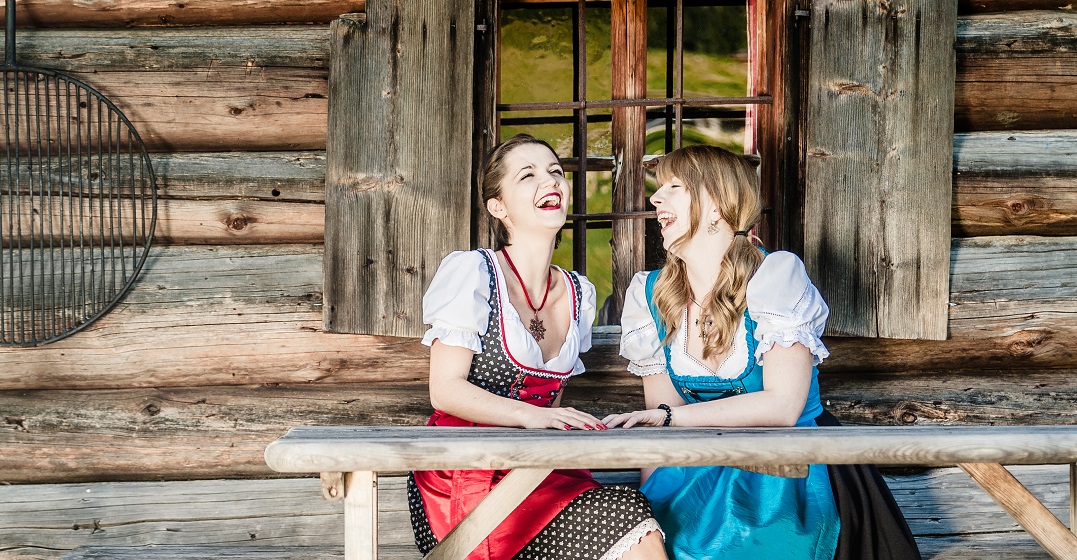by Laura Jones
Published on August 30, 2023
While you are likely familiar with traditional German clothing (thanks in no small part to Oktoberfest), you may be less sure about what traditional Swiss clothing looks like. Certainly, traditional Swiss dress has been influenced by German culture, but it is a rich tapestry of French and Italian influences, too.
People in Switzerland don’t wear traditional Swiss dress, or Trachten as it’s known in German, all the time. But if you’re lucky, you may get to see it on special occasions. Here are six facts you need to know about traditional Swiss clothing.
The first thing to note is that traditional Swiss clothing isn’t the same everywhere in Switzerland. There are variations across the 26 cantons in the color and style of traditional Swiss dress.
For example, in the canton of Obwalden, you’ll see women wearing brightly colored skirts. This would be a less common sight in Unterwalden, where a dark skirt is traditionally the norm. Embroidered motifs and jewelry often differ from one canton to another, too.
Not only can you identify where someone is from by their clothing style, but traditional Swiss dress could also often indicate a person’s professional, social status and even whether they were married!
In some cantons, men indicate that they are single by wearing a red handkerchief in their left pocket. Single women in the canton of Obwalden wore a white ribbon in their hair secured with a silver clip.
You might associate the Dirndl with Germany and Austria, but Swiss women have their own version of this traditional dress. The Swiss Dirndl consists of a long, wide cotton skirt gathered at the waist and a tight vest on the top. The skirt and top are often different colors.
Underneath the top, women usually wear a blouse (often white); under the skirt, they have a pair of stockings or tights. They typically wear black slip-on shoes. Over the skirt, women might wear an apron which, in the past, had the practical purpose of protecting their clothing.
While women wear long skirts, Swiss men favor the knee-length pants most of us know as Lederhosen. Perfect for working and hiking in the mountains, these rugged pants are held up by suspenders and often paired with knee-high socks. To complete the ensemble, men usually wear a white short-sleeved shirt.
Men wear similar shoes to women and have a hat that changes with the seasons — straw in the summer, felt in the winter. Often, men wear colored vests adorned with decorative buttons.
Not to be left out, Swiss children wear miniature versions of traditional dress. Children generally wear the same clothing as adults, though the sizes are smaller and the colors may be different.
In the canton of Appenzell Innerrhoden, for example, girls ages two to ten wear traditional dress in blue, green or red. Across Switzerland, boys, like men, tend to wear Lederhosen with suspenders and black slip-on shoes.
You won’t see many Swiss people wandering the shopping malls of Zurich in their Dirndl and Lederhosen on a day-to-day basis. However, traditional dress is still very much a part of the culture in Switzerland, and you can see it if you attend one of the many festivals the country celebrates.
National Day, on August 1, is a great time to catch the Swiss out in traditional dress as they celebrate the founding of the Swiss Confederacy. Other regional festivals include Zurich’s Sechseläuten in April, the Zermatt Folklore Festival in August, and the Appenzeller Ländlerfest Fest, also in August.
If you’re heading to Switzerland, try to catch some people in their national dress. Women and girls in Dirndl and men and boys in Lederhosen are a traditional sight, and as much part of the culture as alpine landscapes and Swiss chocolate. August is full of festivals; however, you’ll be able to find events happening somewhere throughout the year.
